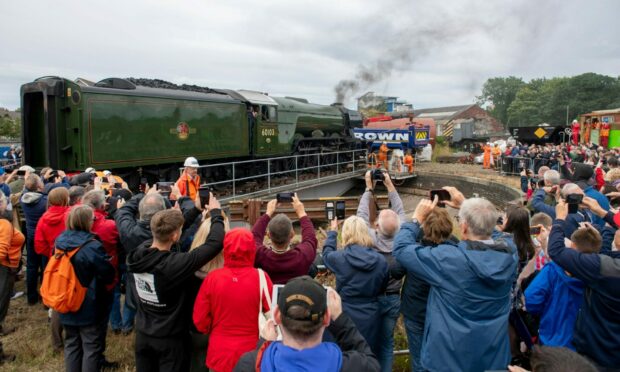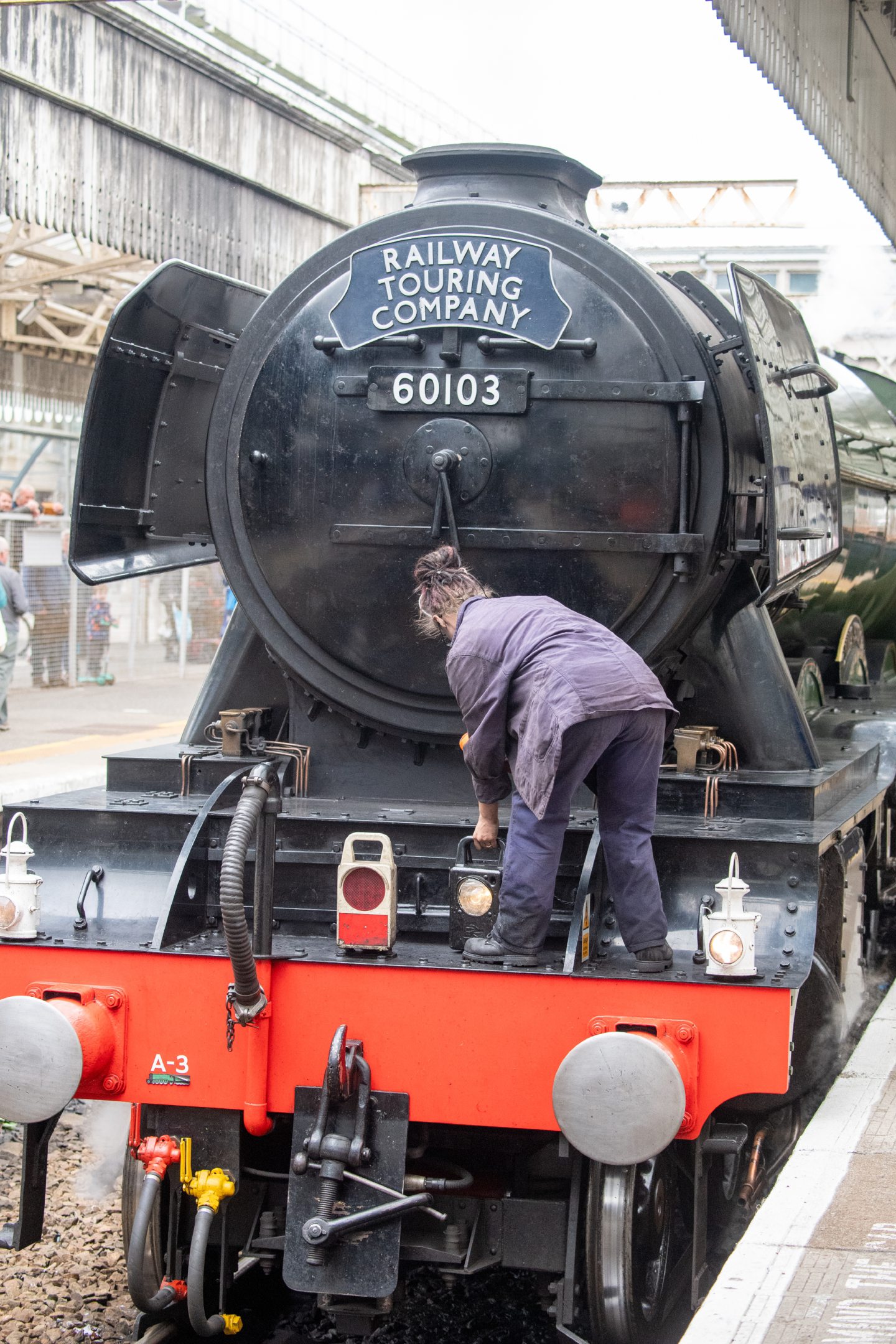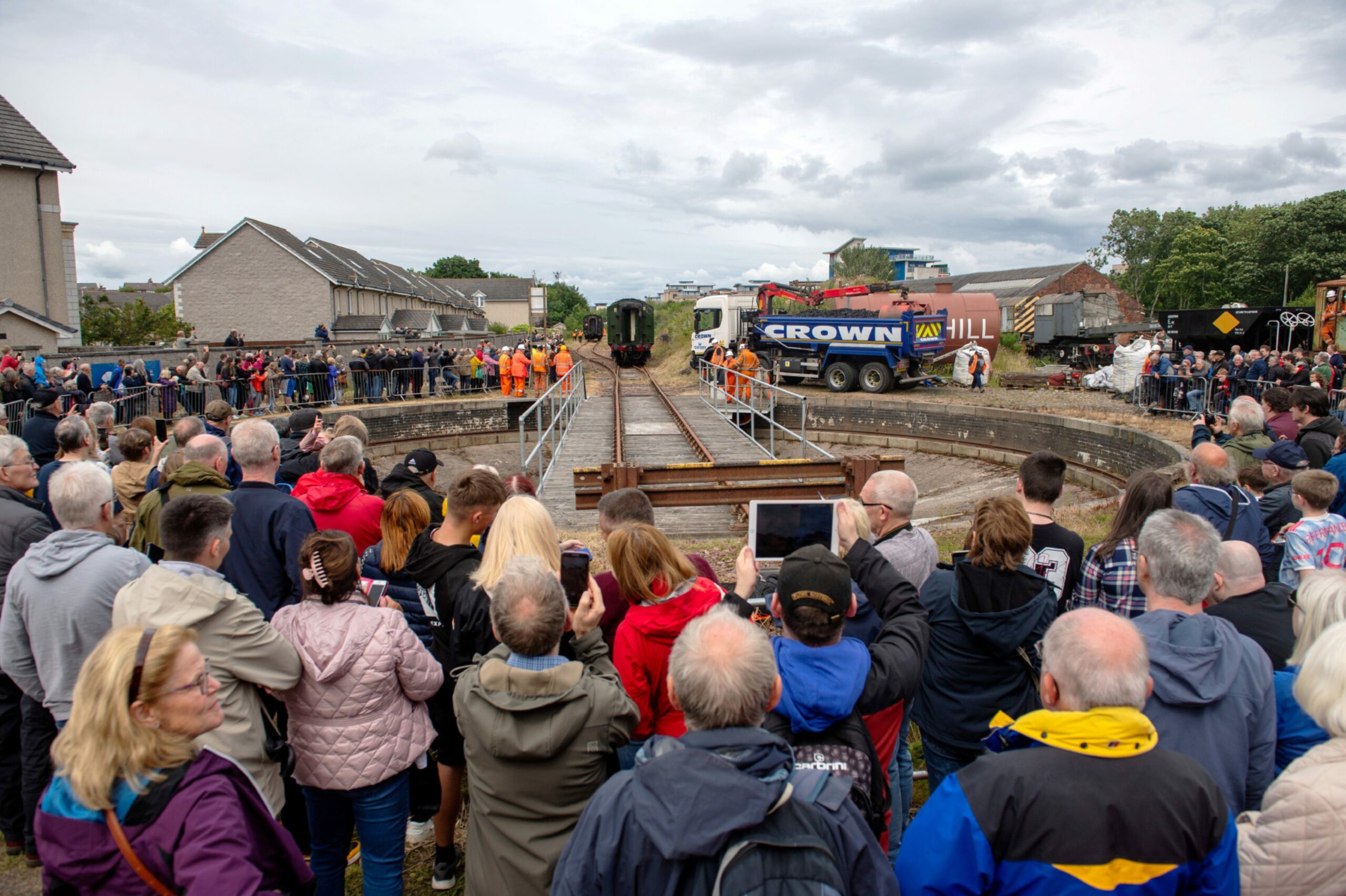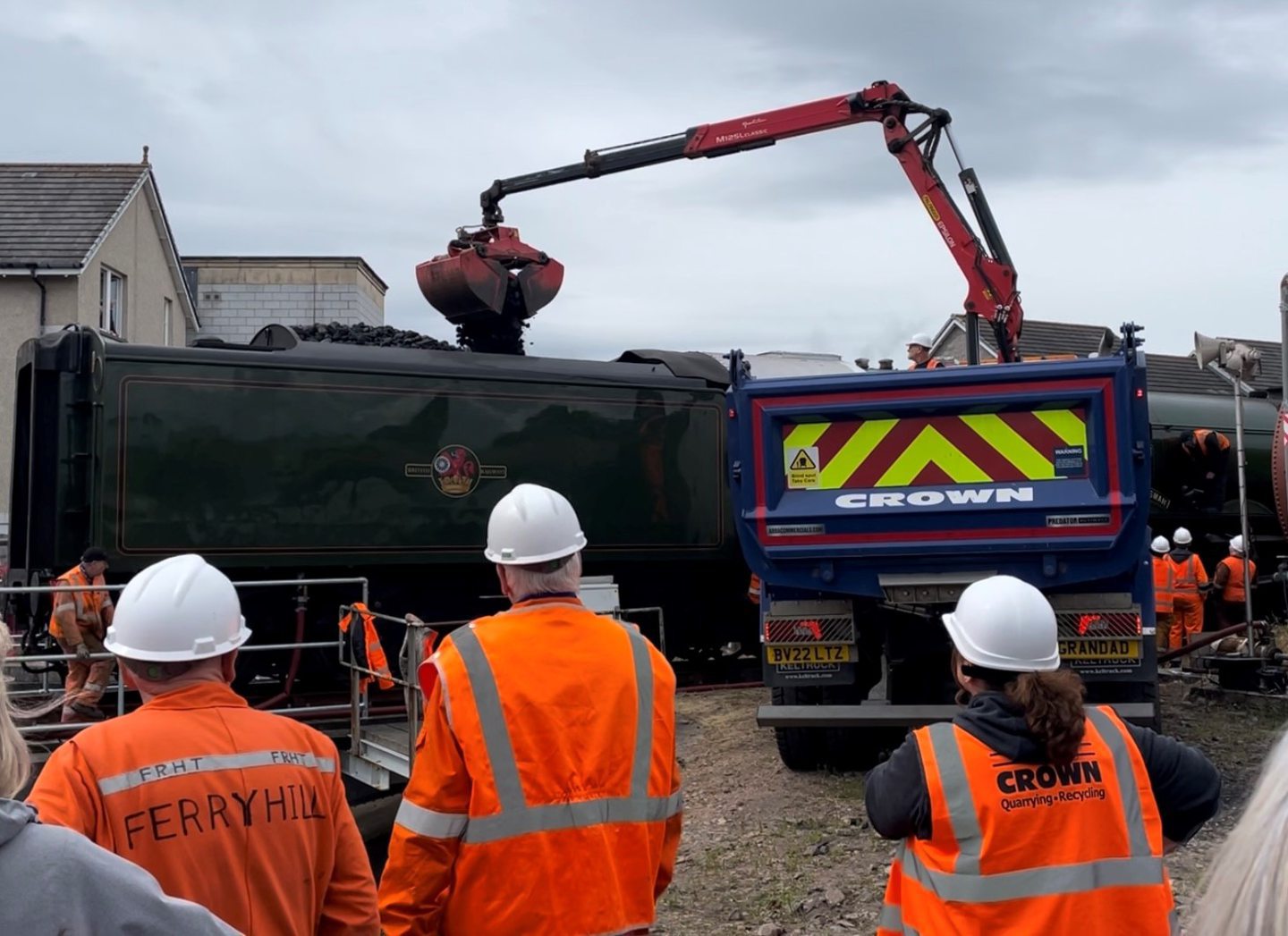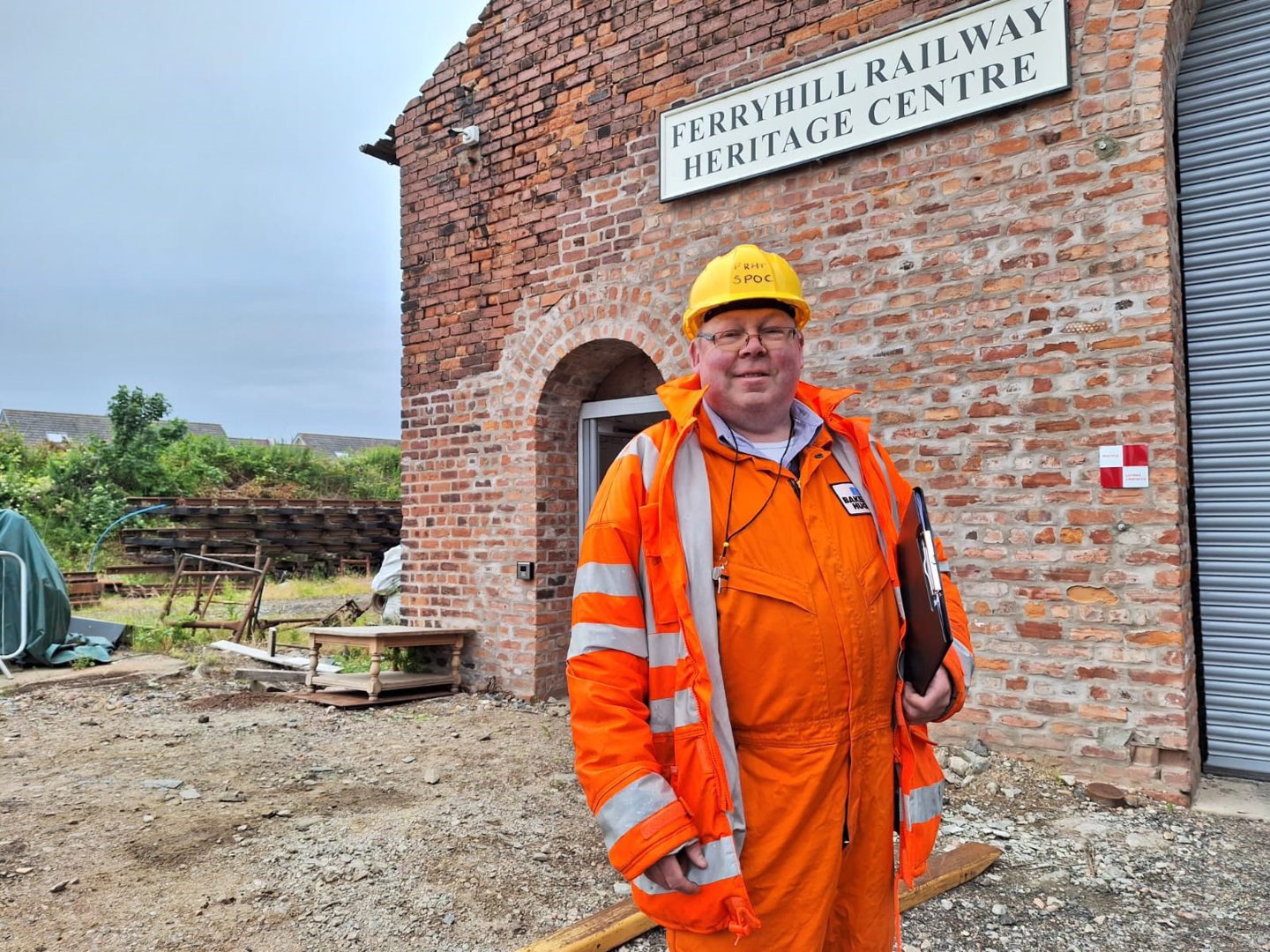Being in the presence of the Flying Scotsman, the world’s most famous locomotive, is the stuff steam dreams are made of.
To glimpse the Flying Scotsman pressing through panoramic countryside is like peering into the past, even for those too young to remember the age of steam.
Beloved by seasoned train spotters and casual observers alike, the opportunity to see the magnificent steam machine in action is a rare opportunity.
But to get up close and personal to this great green God of British Railways engineering, is truly a once-in-a-lifetime opportunity for many people.
And only made possible in Aberdeen thanks to the vintage infrastructure at Ferryhill Heritage Railway Trust, and the incredible efforts of volunteers who keep it running.
Flying Scotsman’s illustrious career
Even those who don’t know much about railways are familiar with the Flying Scotsman.
So called because it thundered up the east coast main line from London King’s Cross to Edinburgh Waverley daily.
Built in Doncaster, the Flying Scotsman went into service on the London and North Eastern Railway (LNER) in February 1923.
Designed by renowned railway engineer Sir Nigel Gresley, the locomotive was part of the A1 class – the most powerful run by LNER.
Synonymous with speed, and a symbol of innovation and nostalgia, it broke speed records and made headlines.
But just 40 years old, despite an illustrious career, the Flying Scotsman was considered old fashioned and removed from service in 1963.
Surplus to requirements, it was saved by railway preservationist Alan Pegler who oversaw the locomotive’s restoration.
Pegler took the engine to America, a trip which bankrupted him, leaving the Flying Scotsman stranded across the pond, until businessman Sir William McAlpine rescued it.
On its return to Britain, the Flying Scotsman ran special services, but by the late 90s it was sold again and there were further problems with its ownership.
Eventually, with huge public backing, the Flying Scotsman was purchased by the National Railway Museum in York in 2004.
Already an icon, it became a national treasure.
Iconic Flying Scotsman captivated Aberdeen audience
Now, at 100 years old, the steam engine has lost none of its enduring and captivating magic.
This was obvious among the hundreds of people who congregated around the turntable at Ferryhill Railway in Aberdeen eagerly awaiting the arrival of the Flying Scotsman.
From toddlers waving Thomas the Tank flags to more seasoned train spotters with hi-spec cameras, the anticipation was palpable.
With only 500 tickets up for grabs, the Ferryhill Railway Heritage Trust (FRHT) could have sold out the event several times over.
Were it not for the trust and the hard work of volunteers, the Flying Scotsman’s Aberdeen visit would not have happened.
Without the turntable, the engine would have had to continue its onward journey to Inverness to turn around at a triangular junction there.
But that extended journey brings with it increased cost and logistical problems with regular mainline trains.
Therefore to see the Flying Scotsman successfully manoeuvre at Ferryhill was a moment of triumph for the band of volunteers who carefully restored the turntable.
Volunteers tested the turntable with 190 tonnes of weight – more than enough for the Flying Scotsman’s 97 tonnes.
Restored turntable enabled Flying Scotsman’s Aberdeen visit
Gordon Simpson, safety officer at FRHT, has a background in mechanical engineering and machining.
He was one of the volunteers who brought the turntable back into use.
Gordon said: “I like all the steam engines, but the Flying Scotsman has a special ‘zing’ being so famous.
“I spent hours redesigning parts of that turntable so I’m quite pleased with how the whole thing went.
“40% of the steel is new, and the main castings have all been replaced with brand new steel.
“One of the old castings had a big chunk out of it and the other’s got minute cracks.
“I didn’t want to risk multi-million-pound engines like the Flying Scotsman on old castings.
“It cost about £90,000 to repair this turntable; a firm in Kintore took it apart in their workshop.
“All the expertise is here in and around Aberdeen to refurbish these things.”
Trust’s ambitious plans for Ferryhill Railway site
At a cost of £500 a month to run the Ferryhill Railway, events like Monday’s Flying Scotsman visit can bring in vital funds and awareness.
The trust relies on donations and grants to carry out preservation work, and has big ambitions to get trains running between Ferryhill and Aberdeen once again.
Gordon added: “We’ve got a lot of things to do, including replacing the old water tower, which means steam engines wouldn’t need to be filled up with hoses.
“The office buildings, which are alongside the Victorian engine shed, are being refurbished after they were burned down.
“When we get this place all done up it’ll look tremendous.
“Around the turntable we want to remove the soil and tarmac it, and put in seats like a football ground with a roof and open sides.
“Then people can sit when it’s raining and watch the trains in a little more comfort.”
Refuelling at Ferryhill
Peter Gordon, trustee and treasurer at FHRT, was delighted that the Flying Scotsman attracted so many people to the heritage site.
It was a good test of the site for future events, with plans to become more of a tourist attraction.
Ferryhill’s facilities were also put to the test with several tonnes of water and coal taken on by the Flying Scotsman before its return journey to Edinburgh.
He said: “It all went really well – people got to see the Flying Scotsman coming down, when it stopped, when it was turning and then back out again.
“We put a limit of 500 tickets just for safety, but we may have managed an extra 100.
“It all went really well, there’s a lot to be done on the site, but we’re starting to open up to the public.
“We’ve got areas that’s now safe and there’s things for people to see, and we’re also working on a miniature railway – they’re actually buildings the rails in the shed.”
Check out this gallery of the Flying Scotsman visiting Aberdeen.
